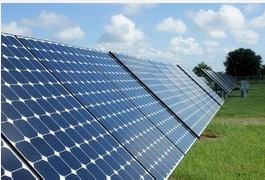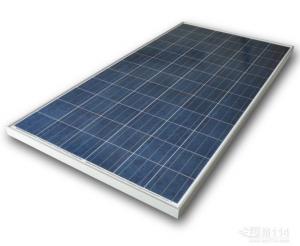Graphene Solar Panels - 295W Poly Solar Module
- Loading Port:
- China Main Port
- Payment Terms:
- TT OR LC
- Min Order Qty:
- -
- Supply Capability:
- -
OKorder Service Pledge
Quality Product, Order Online Tracking, Timely Delivery
OKorder Financial Service
Credit Rating, Credit Services, Credit Purchasing
You Might Also Like
We are in the position to supply you solar panels(20w~310w).
*Featured products in our warehouses and factory:
Poly 245w,250w (60 cells) Mono 260w -Black (60 cells)
*800MW annual production capacity with full-automatic production line
*All our solar panels are insured by CHUBB
*Bankable in Italy(Unicredit) and Australia(HSBC)
*Certificates: TUV, PV CYCLE, MCS, CE, JPEC, UL, ISO, ICIM and CEC
*Warehouses in Holland and Australia
- Q: Can solar panels be installed on fences?
- Yes, solar panels can be installed on fences. In fact, fence-mounted solar panels have become increasingly popular as they provide an additional space for generating renewable energy without consuming valuable land.
- Q: Can solar panels be installed on residential complexes or apartment buildings?
- Yes, solar panels can be installed on residential complexes or apartment buildings. In fact, they are increasingly being installed on such structures to harness clean and renewable energy for multiple households. The installation process typically involves placing the panels on rooftops or in open spaces within the complex, allowing residents to benefit from reduced electricity costs and a more sustainable living environment.
- Q: Can solar panels be used to power a telecommunications network?
- Yes, solar panels can be used to power a telecommunications network. Solar power is a sustainable and renewable energy source that can be harnessed to generate electricity for various applications, including powering telecommunication infrastructure. By installing solar panels, the telecommunications network can operate with minimal reliance on the grid, reducing energy costs and environmental impact. Additionally, solar power can be stored in batteries to ensure uninterrupted power supply even during periods of low sunlight.
- Q: I would like to know of any construction companies, road crews, or any company that uses solar panels in the Tampa area and throws them away. I like to recycle solar panels by repairing and processing what power I can from them. Know any companies that throw out used solar panels? If so, can you provide the name and number?
- Test the battery. Connect the positive and negative terminals of the battery to the positive and negative probes of the voltmeter. If a voltage is read, the battery is still good. Remember, however, that this is a rechargeable battery, so if it is dead, it can be recharged.
- Q: 260 watt solar panels on an rv?
- There are many other controllers, you just need to get a sense for the limitations and make sure you are working within them. Controllers are not that hard to hook up, two connections simply go to the battery, plus and minus. Then the other two go to your panel. I like to put a switch at the panel output, leave it off while you are hooking up the panel side wiring of the controller, then when you are sure everything is connected properly, and you have some kind of battery power indicatioon at the controller, throw on the panel switch and see if it is charging. Remember that a panel is a power source, and connecting it to the controller while it is in the sun is like hooking up a car headlight while the lights are turned on. Another option is to wrap the panel in a blanket and put it in the shade while you are connecting it up. Your panel has a max amp rating, Imax, which will likely be around 5 or 6 amps at that voltage and wattage. Number 4 romex will work for that, as well as medium duty AC extension cord wire, if your run is less than 30 feet or so. Take care Steven, Rudydoo
- Q: I hooked up a 2V solar panel to a small relay. The relay switches at 9V. When I have light shining on the panel it puts out aorund 3-4V, but when I hook it up directly to the relay it drops to V and doesn't switch the relay. Why? and How do I fix it?-2V Mono-Crystalline Solar Panel -JWD 7 4 reed relay
- Your solar panel output too little current that cannot be used to power the relay. Change the panel into 2V 500mA type shall work.
- Q: What are the supplies needed in a solar panel field, i know there are the panels. But what about batteries, and converters. Possibly other things, and how many will i need, for a certain amount of panels?
- Short answer.. alot. A solar field is a big undertaking, and you'd be better off going with a solar consultant. I found this site and would recommend their services as they offer consulting, and are pretty big into solar (or atleast in my area..)
- Q: What sort of maintenance is required for solar panels....?
- New sunlight panels are easy and shiny they usually look cool. Then they get dirty with dirt and particles caught on the wind and residues left in the back of by rain and birds. Solar panels need to be by and large cleaned and maintained to be able to hold them running effectively and maximize the quantity of sunlight they convert into electricity. Unlike home windows your sun procedure wants to have a clean and clear surface to make sure they are working at their highest efficiency. If they are not at their surest performance it approach they are not producing the amount of electrical energy that they might be. Sun panels will attract filth, dirt, soot, pollen, tree sap and salt crystals in coastal areas creating a nice layer of dust. This sediment reduces the amount of light reaching the silicon cells underneath the glass floor and reduces the panel's effectiveness. A solar panel that has on no account been cleaned would be producing almost a 3rd less power than it or else could be. Some have mentioned a ten to fifteen percentage lack of sun output as a result of dirty panels. From the ground the panels may just appear to be clean, similar to your windows. Up close nevertheless you will see the grime that has built up from the grime and pollution within the air. A extra visible deposit that can be left on panels is fowl droppings. These tend to wholly block the sunshine from areas of the photovoltaic panel and may colossal scale back its effectiveness. See much more about sun panels preservation beneath link
- Q: I am planning to buy some solar panels for my cabin and i want to be able to store the electricity. what kind of batteries should i get? i will be running simple things like a tv and radio. where can i buy these batteries? where should i look for the best batteries?
- If you will be storing them outdoors, you can use auto batteries. Indoors, use sealed marine batteries. Number and size depends on your needs. You will need a charge controller between the solar panels and the batteries to get the maximum power out of the array and to avoid damage to the batteries. And you will need an inverter to convert the 2 or 24 volts to 20 or 240 VAC. One large lead acid battery will supply about 000 watt-hours of energy, enough for 200 watts for 5 hours. You have to look at your loads and decide on how many batteries you need. Frequently it is cheaper to buy new appliances that use less power, as that power difference can save a lot of money in batteries, inverter, charge controller and solar panels. But it sounds like a few thousand watt-hours will be enough, or 2 large batteries. The real limiting factor is how much money you want to spend for the solar panels themselves. .
- Q: I am heading to Nepal and do not want to lose power on my cameras but they can only be charged via quot;plugging inquot;. A USB connection does not work. Looking for a solar panel to clip to my bag or carry that I can plug in the charger as if plugging in to wall outlet. Thanks.
- Solar panels require a charge converter before it can be used by an AC source. There is no direct solar panel with built in charge converters that I know of because, when purchasing panels, you must purchase the wattage requirements of the job (this can be several panels linked), and a charge converter that will handle the <? panels required. A chain of stores up here in Canada have a portable battery pack that has a solar panel to increase its charge capacity or duration, but its not something you would want to lug around for long periods of time, because is weights in about 3 lbs.
Send your message to us
Graphene Solar Panels - 295W Poly Solar Module
- Loading Port:
- China Main Port
- Payment Terms:
- TT OR LC
- Min Order Qty:
- -
- Supply Capability:
- -
OKorder Service Pledge
Quality Product, Order Online Tracking, Timely Delivery
OKorder Financial Service
Credit Rating, Credit Services, Credit Purchasing
Similar products
Hot products
Hot Searches
Related keywords






























